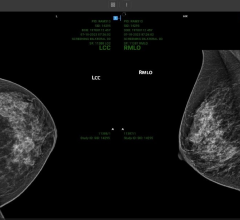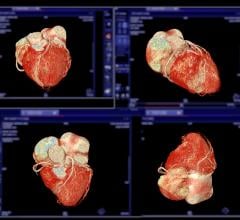February 5, 2013 — A prospective clinical study was published recently in the American Journal of Roentgenology on whether coronary computed tomography angiography (CTA) provided an accurate and efficient management method for assessment of chest pain patients with low to intermediate risk of acute coronary syndrome (ACS). This study, presented by Ricardo C. Cury, M.D., of Baptist Health of South Florida, current vice president of the Society of Cardiovascular Computed Tomography (SCCT) and colleagues, was carried out over three emergency departments in a large healthcare system, between January 2009 and October 2010, and found that length of stay was cut in half, and the rate of major adverse cardiac events (MACE) remained very low in patients with negative CTA findings.
More than six million visits to emergency departments occur annually in the United States, made by patients experiencing chest pain. These visits can lead to a series of downstream testing, consuming both time and expense. 529 patients experiencing chest pain were admitted to the emergency departments and were treated with CTA. A dedicated chest pain triage protocol was implemented in five levels. After undergoing CTA treatment, the patients were grouped by level of severity in risk group, including no disease, mild, moderate and severe risk.
Outcome measures of the study included MACE rate during the first thirty days after CTA, length of stay, radiation dose, diagnosis time and downstream testing results. The length of stay was compared both pre- and post-implementation of the triaging system and found a 51 percent decrease in length of stay, lowered from 28.8 to 14.0 hours.
88.5 percent of patients were classified as having no disease or mild non-obstructive disease by CTA and were discharged from the emergency department after CTA. The downstream testing rate in this group was 3.2 percent, with very low MACE occurring in thirty days (0.2 percent). In comparison patients with stenosis of 70 percent or greater had 8.3 percent of MACE. With the fast patient release and the low downstream testing rate, CTA provides a potential cost-savings in the emergency department.
"This study adds to the body of literature supporting the use of coronary CTA in the emergency department setting," says Cury. "It reinforces the notion that CTA can be successfully implemented in the ER setting if coupled with a dedicated chest pain pathway guiding clinicians on when to order the test appropriate and how to act on the test results."
John Lesser, current president of SCCT, adds: "This prospective study by Cury et al. strongly reinforces the results from three previous randomized trials of coronary CTA in the ED. Most importantly, they were successful limiting downstream testing and costs by using a defined protocol that detailed how to act on the test results."
For more information: www.SCCT.org


 April 16, 2024
April 16, 2024 








